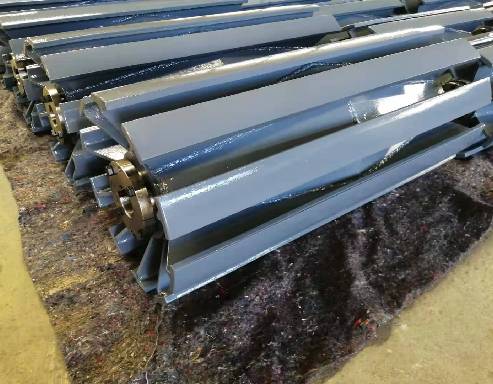 Afrikaans
Afrikaans  Albanian
Albanian  Amharic
Amharic  Arabic
Arabic  Armenian
Armenian  Azerbaijani
Azerbaijani  Basque
Basque  Belarusian
Belarusian  Bengali
Bengali  Bosnian
Bosnian  Bulgarian
Bulgarian  Catalan
Catalan  Cebuano
Cebuano  Corsican
Corsican  Croatian
Croatian  Czech
Czech  Danish
Danish  Dutch
Dutch  English
English  Esperanto
Esperanto  Estonian
Estonian  Finnish
Finnish  French
French  Frisian
Frisian  Galician
Galician  Georgian
Georgian  German
German  Greek
Greek  Gujarati
Gujarati  Haitian Creole
Haitian Creole  hausa
hausa  hawaiian
hawaiian  Hebrew
Hebrew  Hindi
Hindi  Miao
Miao  Hungarian
Hungarian  Icelandic
Icelandic  igbo
igbo  Indonesian
Indonesian  irish
irish  Italian
Italian  Japanese
Japanese  Javanese
Javanese  Kannada
Kannada  kazakh
kazakh  Khmer
Khmer  Rwandese
Rwandese  Korean
Korean  Kurdish
Kurdish  Kyrgyz
Kyrgyz  Lao
Lao  Latin
Latin  Latvian
Latvian  Lithuanian
Lithuanian  Luxembourgish
Luxembourgish  Macedonian
Macedonian  Malgashi
Malgashi  Malay
Malay  Malayalam
Malayalam  Maltese
Maltese  Maori
Maori  Marathi
Marathi  Mongolian
Mongolian  Myanmar
Myanmar  Nepali
Nepali  Norwegian
Norwegian  Norwegian
Norwegian  Occitan
Occitan  Pashto
Pashto  Persian
Persian  Polish
Polish  Portuguese
Portuguese  Punjabi
Punjabi  Romanian
Romanian  Russian
Russian  Samoan
Samoan  Scottish Gaelic
Scottish Gaelic  Serbian
Serbian  Sesotho
Sesotho  Shona
Shona  Sindhi
Sindhi  Sinhala
Sinhala  Slovak
Slovak  Slovenian
Slovenian  Somali
Somali  Spanish
Spanish  Sundanese
Sundanese  Swahili
Swahili  Swedish
Swedish  Tagalog
Tagalog  Tajik
Tajik  Tamil
Tamil  Tatar
Tatar  Telugu
Telugu  Thai
Thai  Turkish
Turkish  Turkmen
Turkmen  Ukrainian
Ukrainian  Urdu
Urdu  Uighur
Uighur  Uzbek
Uzbek  Vietnamese
Vietnamese  Welsh
Welsh  Bantu
Bantu  Yiddish
Yiddish  Yoruba
Yoruba  Zulu
Zulu Innovative Roller Seal Solutions for Enhanced Performance and Durability in Industrial Applications
Understanding Roller Seals An Essential Component in Mechanical Systems
In the world of mechanical engineering and design, seals serve a critical function in maintaining system integrity and efficiency. Among various types of seals, roller seals have emerged as vital components across numerous applications, ranging from automotive and aerospace to industrial machinery and consumer products. This article aims to provide a comprehensive overview of roller seals, their design, functionality, and significance in modern engineering.
What are Roller Seals?
Roller seals, often referred to as rolling seals, are specifically designed sealing devices that use rolling elements (like balls or rollers) to create a barrier between different environments or fluids. Unlike traditional seals, which rely on compression and surface contact, roller seals can accommodate relative movement while minimizing friction. This unique attribute allows them to provide a more effective seal in dynamic applications where components may be in continuous motion.
Design and Mechanism
The design of roller seals typically includes an outer casing and an inner drum or rotor, with rolling elements strategically positioned between them. These rolling elements can be either spherical or cylindrical in shape, and they function through the principle of rolling motion, which reduces the contact area and, consequently, friction. This design not only enhances the durability of the seal but also extends its operational lifespan.
One of the key mechanisms in roller seals is the ability to adjust to varying pressures and temperatures. As the rolling elements move, they can easily adapt to the changing conditions, ensuring that a reliable seal is maintained even in demanding environments. This adaptability is crucial for applications where thermal expansion or pressure fluctuations are common.
Applications of Roller Seals
roller seal

Roller seals find applications in several industries due to their effectiveness and efficiency. In the automotive sector, they are often employed in transmissions and differential systems where smooth operation and lubrication retention are essential. Their ability to prevent oil leaks while allowing for the necessary movement of components makes them invaluable in maintaining the performance and efficiency of modern vehicles.
In aerospace, roller seals play a significant role in hydraulic systems, especially in actuators and landing gear systems. They help to maintain pressure while resisting the harsh conditions and vibrations experienced during flight. Moreover, the energy efficiency of roller seals significantly contributes to the overall performance of aircraft systems.
Industrial machinery also benefits from the use of roller seals. Equipment such as pumps, motors, and compressors often require reliable sealing solutions to prevent leaks and ensure optimal operation. Roller seals provide a reliable and efficient means of sealing in these applications, reducing downtime and maintenance costs.
Advantages of Roller Seals
The use of roller seals comes with numerous advantages. First and foremost, their ability to reduce friction leads to lower energy consumption and improved efficiency in mechanical systems. Additionally, roller seals typically exhibit a longer service life compared to traditional seals, as the rolling motion minimizes wear and tear on both the seal and the mating surfaces.
Furthermore, roller seals contribute to a cleaner operating environment by preventing leaks of fluids and gases that could lead to contamination or environmental hazards. This feature is especially important in industries such as food processing, pharmaceuticals, and chemical manufacturing, where strict regulations are in place concerning contamination control.
Conclusion
In conclusion, roller seals represent a critical advancement in sealing technology, offering a blend of efficiency, adaptability, and reliability. As industries continue to push the boundaries of engineering and design, the role of roller seals will undoubtedly become even more significant. Their ability to maintain system integrity while accommodating motion positions them as an essential component in modern mechanical systems, ensuring that machines operate smoothly and efficiently for years to come. As engineering challenges evolve, roller seals are poised to be at the forefront, driving innovation and enhancing the performance of various applications globally.
-
Revolutionizing Conveyor Reliability with Advanced Rubber Lagging PulleysNewsJul.22,2025
-
Powering Precision and Durability with Expert Manufacturers of Conveyor ComponentsNewsJul.22,2025
-
Optimizing Conveyor Systems with Advanced Conveyor AccessoriesNewsJul.22,2025
-
Maximize Conveyor Efficiency with Quality Conveyor Idler PulleysNewsJul.22,2025
-
Future-Proof Your Conveyor System with High-Performance Polyurethane RollerNewsJul.22,2025
-
Driving Efficiency Forward with Quality Idlers and RollersNewsJul.22,2025





























